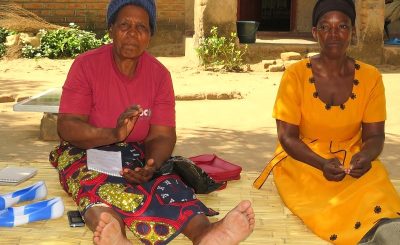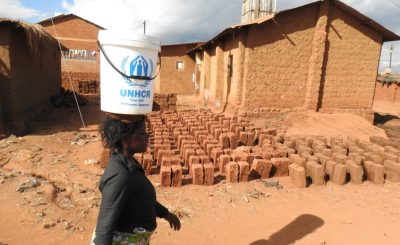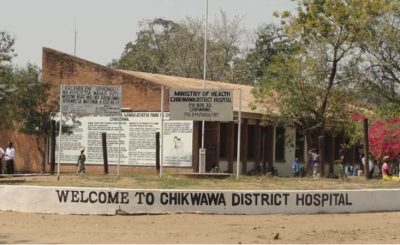The introduction of two new varieties of tomato in Malawi and nearby Mozambique could help boost food security and provide local solutions to adapt to climate change and meet nutrition needs.
The tomatoes are proudly displayed in a market in Blantyre – round, plump and red. These new, locally grown tomatoes are emerging as one of the most important and effective ways in which SADC is boosting food security in the region. Named after the Bvumbwe research station located south of Blantyre in Malawi, the new varieties are named Bvumbwe 1 and Bvumbwe 2 tomatoes. The area is well-known for its fertile hillsides. Introducing varieties that have higher nutritional value has drawn together government and non-governmental organisations, including the Centre for Coordination of Agricultural Research and Development in Southern Africa (CCARDESA), SADC, the Malawi government and horticulturalists, agronomists and other specialists. The initiative has grown out of SADC’s Regional Agricultural Policy.
About 70% of the region’s population depends on agriculture for food, income and employment. Agriculture is also a major source of exports for several Member States, contributing on average of 13% to total export earnings and 66% to the value of intra-regional trade.
In 2007, the SADC Council instructed the SADC Secretariat to prioritise food security and the management of transboundary natural resources and environments. Together with those, three other areas form SADC’s core focus on agriculture: crop production, livestock production and information in the form of data. SADC’s MultiCountry Agricultural Productivity Programme and the Regional Indicative Strategic Development Plan until 2020 provide additional strategic direction.
All of these policy instruments are given credence by the developments at Bvumbwe, which have resulted in the adoption of highly nutritious tomato varieties. Bvumbwe tomatoes are disease tolerant and have a long shelf life, making them better adapted to effects of climate change and suitable for cross-border trade by resource-poor entrepreneurs.
Acting CCARDESA Executive Director Dr Simon Mwale, based close to the SADC Secretariat in Gaborone, Botswana, points out another advantage of the Bvumbwe tomatoes: They have higher levels of vitamin A than the average tomato.
“You can get vitamin A from animal products and vegetable sources, both of which can be beyond the reach of the common low-income household in the SADC region,” he says. “The tomato is a key ingredient in cooking at all levels of society. And with these varieties of tomato you can provide extra vitamin A to the lowest income group of families in the country. It’s a big plus for the population’s nutrition.”
Malawi has long battled vitamin A deficiency, which causes stunting and major growth defects.
Malawi has the fifth-highest stunting rate in the world with 53% of children under the age of one suffering from this growth defect, according to the World Bank.
It’s here where the Bvumbwe research station’s results make a real difference. Managed by Thomson Chilanga, the station developed the two new varieties to thrive in the specific conditions of Malawi, Mozambique and Zimbabwe.
“The area is conducive to a number of crops. Farmers like to grow different types of crops and the government is emphasising diversification. In our research, we also think about the market and what people want,” Chilanga says.
Their research and innovations platform includes the entire food pipeline – from farmers to extension officers, wholesalers, retail outlets and distribution centres. This participatory research approach, facilitated through CCARDESA, makes it possible for all key actors to identify and resolve challenges along the value chain together.
The tomatoes are already a regional success story: The seed is being distributed in neighbouring Mozambique and Zimbabwe where farmers have started planting the Bvumbwe 1 and Bvumbwe 2 varieties.
“We’ve even seen some business people and consumers in Mozambique coming into Malawi and we linked them up with the farmers in Lukya village in Thyolo so there’s now an exchange of produce, which has been welcomed by local farmers,” says Chilanga.
He adds that the local farmers “are now feeding the students, the hospital patients and even prisoners. These various markets need to be linked to the agri-dealers, extension staff and farmers.
This leads to sustainability through the development of agriculture technology.”
Once an innovation platform is established, the scientists step back and the farmers take over the management of the entire process. This new approach was promoted and supported under the
Sub-Saharan Challenge Programme led by the Forum for Agricultural Research in Africa at the continental level and coordinated by CCARDESA, a SADC subsidiary, in Southern Africa.
Farmer Jonathan Matebule is chairman of the Challenge Project Group in Lukya, a village perched on a hilltop overlooking the highest point in Malawi, Malanje Mountain.
“The researchers came with a number of varieties but the Bvumbwe responded best,” says
Matebule. “After I was trained by the scientists, I planted this crop,” he says, pointing at his tomatoes, which soon became the envy of other farmers.
“Our livelihoods have improved because of the proceeds of the sales of these Bvumbwe tomatoes.
Because of them I can now afford school fees. I bought dairy cows and pigs and can now feed my family properly,” adds Matebule.
Before the programme, most children in the village did not go to school. Now enrolment is at 100%, which the community links directly to the income from agricultural product sales, especially the Bvumbwe tomatoes.
Change is also evident in the village’s houses. Where previously they were made of mud and straw, thanks to new profits they are now built from bricks and with corrugated iron roofs. A few villager even upgraded from bicycles to motorbikes, which handle the rough terrain better. Matebule is not the only one in the village who’s seen his life change.
Agnes Jakaramba began hers as a farmworker on other people’s fields. Today she owns her own one-hectare farm on which she grows vegetables. “We irrigate early in the morning, then (again) later in the afternoon. I also fertilise my field. It’s a hard life but I’m my own boss and I’m feeling good now,” she says.
In Blantyre, support also comes from agri-business focused shops.
Austin Banda, operations manager in one of them, says: “We’ve been in business for around 20 years, providing technical support from seeds to harvesting. We started with one outlet and now we have seven,” he says.
Banda’s Blantyre shop is busy with farmers and other clients purchasing chemicals, seeds and fertiliser along with small implements and pumps. CCARDESA’s Dr Mwale is emphatic about the success of the humble tomato.
“This is a success for three reasons: Firstly improving agriculture research amongst SADC Member States, secondly it encourages innovations to flow from one country to another, and thirdly it encourages intraregional trade.”
SADC Programme: Agriculture remains the primary source of nutrition, employment and income for 61% of SADCcitizens. Its critical importance led to the SADC Multi-Country Agricultural Productivity Programme (SADC MAPP) in 2008. The SADC MAPP is a fifteen year programme, broken down into three five-year phases. The goal of the MAPP is to enhance agricultural research, technological innovation and dissemination, and the linkages among agricultural institutions in the SADC region.




